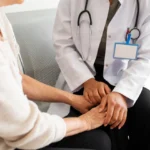During IVF treatment, women are given hormone drugs to stimulate egg development. When hormone drugs stimulate the ovaries too much, OHSS may occur as a side effect. Symptoms of Ovarian Overstimulation Syndrome The symptoms of ovarian overstimulation syndrome can be mild, moderate or severe. During controlled egg stimulation for in vitro fertilization (IVF), one in …
During IVF treatment, women are given hormone drugs to stimulate egg development. When hormone drugs stimulate the ovaries too much, OHSS may occur as a side effect.
Symptoms of Ovarian Overstimulation Syndrome
The symptoms of ovarian overstimulation syndrome can be mild, moderate or severe. During controlled egg stimulation for in vitro fertilization (IVF), one in three women may show mild OHSS symptoms. These symptoms may manifest as mild swelling, nausea and bloating in the abdominal area. The same symptoms are felt more severely in women with moderate OHSS. In cases where ovarian overstimulation syndrome is severe, women may experience serious symptoms. They may experience symptoms such as weight gain of more than 1 kilogram in a short period of 24 hours, severe abdominal pain, vomiting, shortness of breath, bloating in the abdominal area and decreased urination. In this case, they should be closely monitored and receive medical support. It is known that severe cases can be life-threatening.
What Causes OHSS?
The causes of ovarian hyperstimulation syndrome are not fully known. High levels of E2 hormone are thought to play a role in the formation of OHSS. VEGF is also responsible for fluid leakage out of the vein. It can be said that the syndrome can occur within approximately 10 days after the HCG hormone is given as a trigger for the maturation of the eggs during in vitro fertilization treatments. OHSS may worsen as pregnancy occurs during the treatment cycle and the body starts its own HCG production. It is also possible to mention various factors that increase the risk of OHSS formation. Polycystic ovary syndrome, being under the age of 35, having a low body mass index, having many follicles and having had OHSS before are among the risk factors. However, OHSS can occur even if there is no risk factor.
Ovarian Hyperstimulation Syndrome Can Be Prevented
In order to prevent the formation of OHSS, which can cause serious complications in severe cases, the doses of medication to be given for the maturation of the eggs should be determined individually. The number and size of women's follicles should be determined with ultrasound imaging and hormone levels should be monitored. It is very important to closely monitor the treatment process to avoid OHSS. If it is determined that women are having an extreme reaction to the medication and there is a significant increase in estradiol levels, the hormone levels should be waited to decrease before administering the medication or the treatment should be discontinued.




